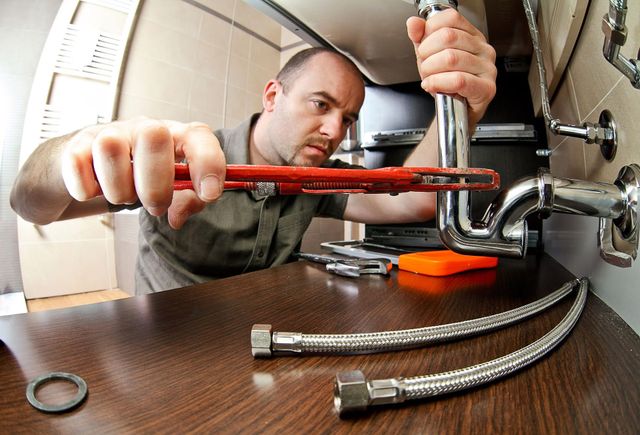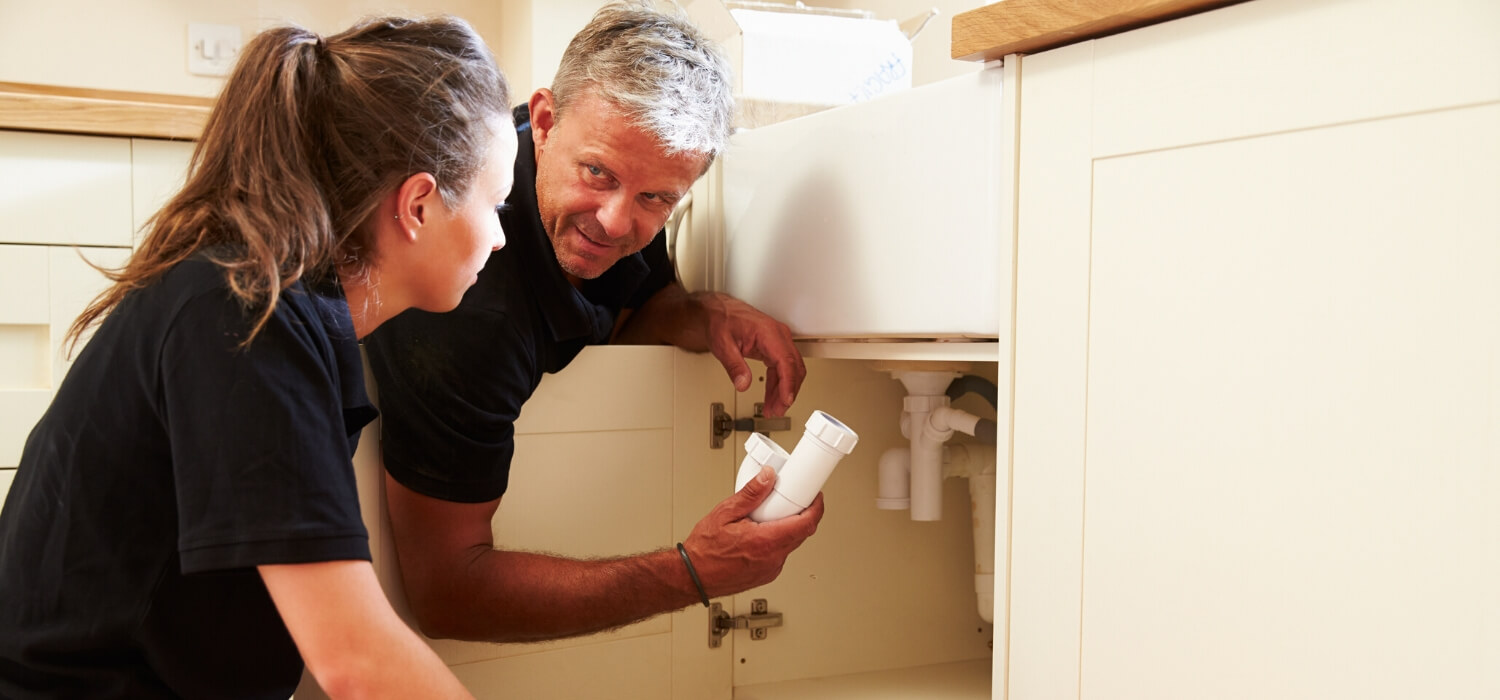The Core Parts of Your Home's Plumbing System
The Core Parts of Your Home's Plumbing System
Blog Article
In this article underneath yow will discover additional high-quality guidance all about The Inner Workings of Your Home's Plumbing.

Recognizing exactly how your home's plumbing system functions is vital for every house owner. From supplying clean water for drinking, cooking, and showering to safely removing wastewater, a properly maintained pipes system is important for your family's wellness and convenience. In this comprehensive guide, we'll discover the elaborate network that composes your home's plumbing and deal suggestions on upkeep, upgrades, and handling common concerns.
Introduction
Your home's pipes system is greater than just a network of pipelines; it's a complex system that guarantees you have access to clean water and reliable wastewater removal. Recognizing its components and exactly how they interact can help you protect against costly repair services and make sure everything runs smoothly.
Standard Parts of a Pipes System
Pipes and Tubes
At the heart of your plumbing system are the pipelines and tubing that lug water throughout your home. These can be made from various products such as copper, PVC, or PEX, each with its advantages in terms of durability and cost-effectiveness.
Fixtures: Sinks, Toilets, Showers, and so on.
Fixtures like sinks, toilets, showers, and tubs are where water is made use of in your home. Recognizing exactly how these components connect to the pipes system helps in identifying issues and intending upgrades.
Valves and Shut-off Factors
Valves manage the circulation of water in your plumbing system. Shut-off shutoffs are essential throughout emergencies or when you require to make fixings, permitting you to isolate parts of the system without disrupting water circulation to the entire home.
Water Supply System
Key Water Line
The main water line links your home to the community water or a personal well. It's where water enters your home and is dispersed to various fixtures.
Water Meter and Stress Regulatory Authority
The water meter steps your water use, while a stress regulator makes certain that water streams at a risk-free stress throughout your home's pipes system, avoiding damages to pipes and components.
Cold Water vs. Hot Water Lines
Comprehending the distinction in between cold water lines, which supply water straight from the primary, and warm water lines, which carry warmed water from the water heater, aids in fixing and planning for upgrades.
Drain System
Drain Pipes Piping and Traps
Drain pipes carry wastewater away from sinks, showers, and bathrooms to the sewage system or sewage-disposal tank. Catches protect against sewage system gases from entering your home and also catch debris that might create clogs.
Air flow Pipes
Ventilation pipelines allow air right into the drainage system, stopping suction that can reduce drain and create traps to vacant. Proper air flow is important for keeping the integrity of your pipes system.
Importance of Appropriate Drainage
Making sure proper drain protects against backups and water damages. Routinely cleaning up drains pipes and maintaining traps can protect against costly repair work and expand the life of your pipes system.
Water Heating System
Kinds Of Hot Water Heater
Water heaters can be tankless or traditional tank-style. Tankless heating units warmth water on demand, while storage tanks save warmed water for immediate use.
Upgrading Your Pipes System
Factors for Upgrading
Updating to water-efficient fixtures or replacing old pipes can enhance water top quality, reduce water expenses, and boost the worth of your home.
Modern Plumbing Technologies and Their Benefits
Check out modern technologies like clever leakage detectors, water-saving toilets, and energy-efficient water heaters that can save cash and decrease ecological effect.
Expense Factors To Consider and ROI
Calculate the upfront costs versus long-lasting financial savings when considering plumbing upgrades. Numerous upgrades pay for themselves with minimized energy costs and less repairs.
How Water Heaters Connect to the Pipes System
Understanding how water heaters connect to both the cold water supply and hot water distribution lines assists in identifying problems like inadequate warm water or leakages.
Maintenance Tips for Water Heaters
Routinely purging your hot water heater to get rid of debris, examining the temperature level setups, and inspecting for leakages can expand its life-span and boost power performance.
Usual Pipes Concerns
Leakages and Their Reasons
Leaks can happen because of aging pipes, loose installations, or high water stress. Resolving leakages without delay stops water damages and mold growth.
Clogs and Clogs
Clogs in drains pipes and commodes are usually brought on by flushing non-flushable things or a build-up of oil and hair. Utilizing drain screens and bearing in mind what drops your drains pipes can prevent obstructions.
Indications of Plumbing Problems to Expect
Low tide pressure, slow drains pipes, foul odors, or abnormally high water expenses are signs of potential pipes issues that should be attended to promptly.
Pipes Maintenance Tips
Routine Evaluations and Checks
Arrange annual pipes inspections to catch concerns early. Try to find signs of leakages, rust, or mineral buildup in taps and showerheads.
Do It Yourself Maintenance Tasks
Straightforward jobs like cleaning tap aerators, checking for toilet leakages using color tablet computers, or insulating revealed pipes in cool environments can prevent significant plumbing issues.
When to Call an Expert Plumbing
Know when a pipes problem requires expert knowledge. Attempting complicated fixings without appropriate knowledge can result in even more damage and greater repair work prices.
Tips for Decreasing Water Use
Easy behaviors like repairing leakages quickly, taking much shorter showers, and running full lots of laundry and meals can conserve water and reduced your energy expenses.
Eco-Friendly Pipes Options
Consider lasting pipes materials like bamboo for floor covering, which is durable and environmentally friendly, or recycled glass for kitchen counters.
Emergency Readiness
Actions to Take During a Pipes Emergency situation
Know where your shut-off shutoffs lie and how to shut off the water supply in case of a burst pipeline or major leak.
Relevance of Having Emergency Situation Contacts Useful
Maintain call information for regional plumbing professionals or emergency solutions conveniently available for quick action throughout a plumbing dilemma.
Ecological Effect and Preservation
Water-Saving Components and Devices
Setting up low-flow taps, showerheads, and bathrooms can significantly lower water use without giving up efficiency.
Do It Yourself Emergency Situation Fixes (When Suitable).
Temporary fixes like using duct tape to patch a dripping pipeline or putting a container under a leaking faucet can reduce damage up until an expert plumbing arrives.
Conclusion.
Understanding the makeup of your home's pipes system encourages you to maintain it effectively, conserving time and money on repairs. By following regular maintenance regimens and remaining notified regarding contemporary plumbing technologies, you can guarantee your pipes system operates efficiently for several years ahead.
HOW YOUR PLUMBING SYSTEM WORKS
Which Pipes Do What?
Blue lines = fresh water supply entering the building Red lines = hot water supply entering the building Grey lines = pipes carrying waste away from the building and venting pipes carrying gases away from the building (through the roof) YOUR MAIN PLUMBING SYSTEMS
There are two main plumbing systems that support your home s basic plumbing needs one that brings clean water into your home, and one that sends dirty water away from your home. Connected to the toilet, bath, shower, and other faucets in your home, these two systems keep your water flowing in the right directions.
ACCESSING FRESH WATER
Fresh and clean water is brought into your home through the main water supply line . Filtered through one pipe, this water is pressured to flow into the various fixtures in your home at any given time.
This water can be sourced from a well located on your property, a pond or river (mostly cottages), or, as in most cases, from the city s municipal water treatment centre. However, it is important to note that water that is untreated, such as the water siphoned from ponds or rivers, may not be safe to drink. Personal water supplies always need to be treated for hardness and contaminants before consumed.
MUNICIPAL WATER SUPPLIES
Improve taste and odour Remove sediment Eliminate hardness Reduce chlorine COLD WATER SUPPLY VS. HOT WATER SUPPLY
Cold water flows into your home or building through the service line, which then distributes hot or cold water to your fixtures. This line is most commonly run through a central column that runs floor to floor. Hot water runs in short and straight pipes as the longer the pipeline, the more heat that will be lost in the transfer. Having shorter pipes also allows residents to access hot water more quickly.
WASTE WATER SYSTEM
Your wastewater system is divided into two parts pipes that send wastewater away from your home and venting pipes that send sewer gas away from your home. Sewage water travels through pipes that flush the water and waste towards local sewers that are operated and managed by your city or town. Most sewer systems rely on gravity to move the wastewater to where it needs to go.
The further away from your toilet or sink, the larger wastewater pipes become. This allows for waste to be disposed of from various parts of your home or business at once without pipe blockages. The angle and flow of these pipes are also essential for keeping your waste pipes clear of build up.
https://harrisplumbing.ca/how-your-home-plumbing-system-works/

Hopefully you liked our section on Anatomy of a House: Understanding the Components. Thanks a lot for taking a few minutes to browse our blog. Make sure you set aside a second to distribute this content if you appreciated it. We love reading our article about Anatomy of a House: Understanding the Components.
Book Services Report this page